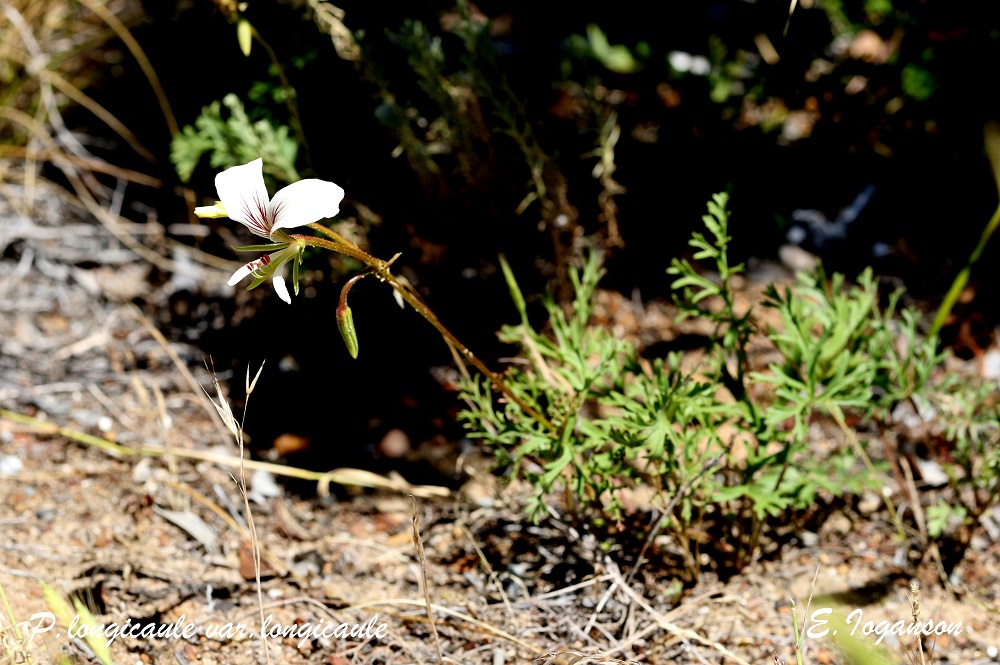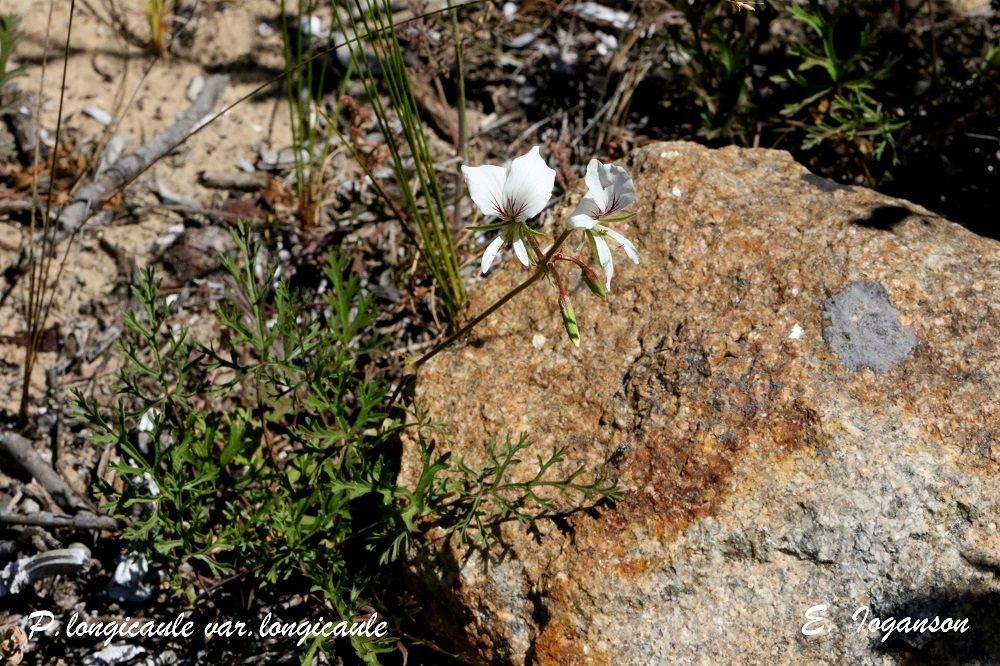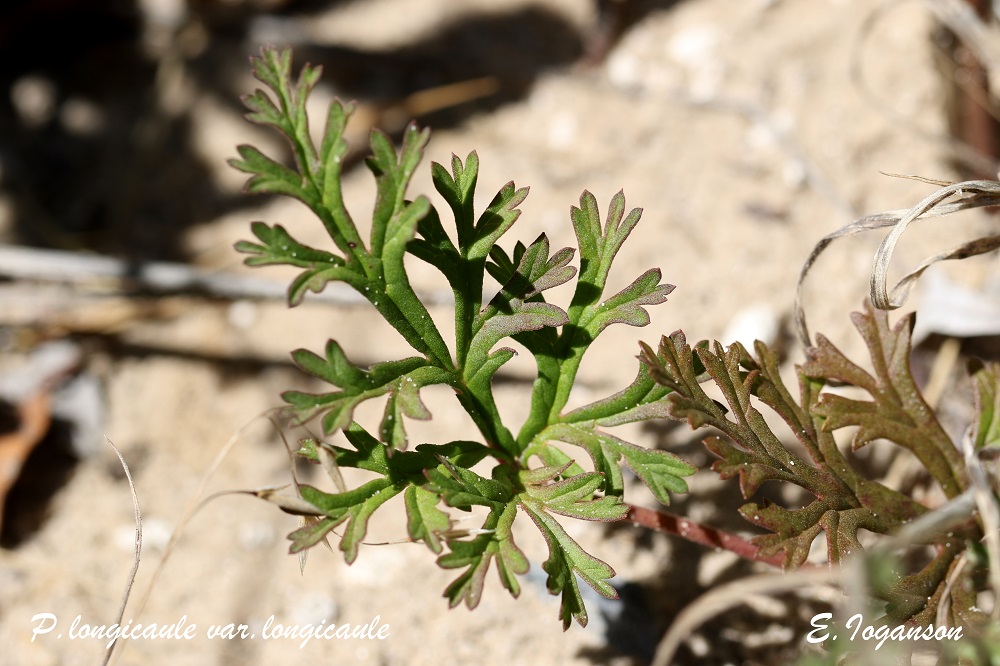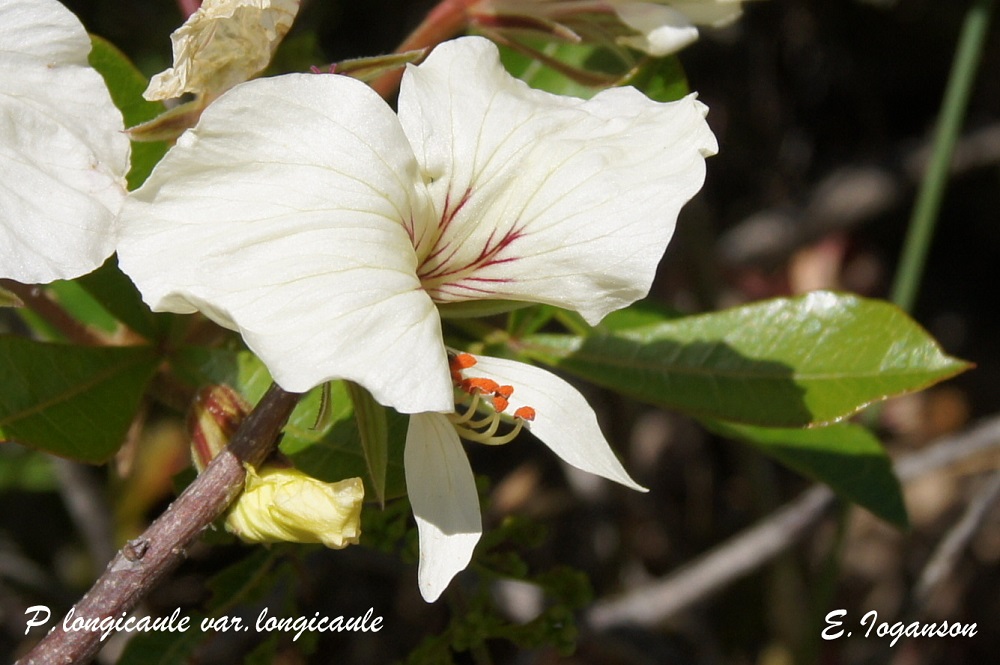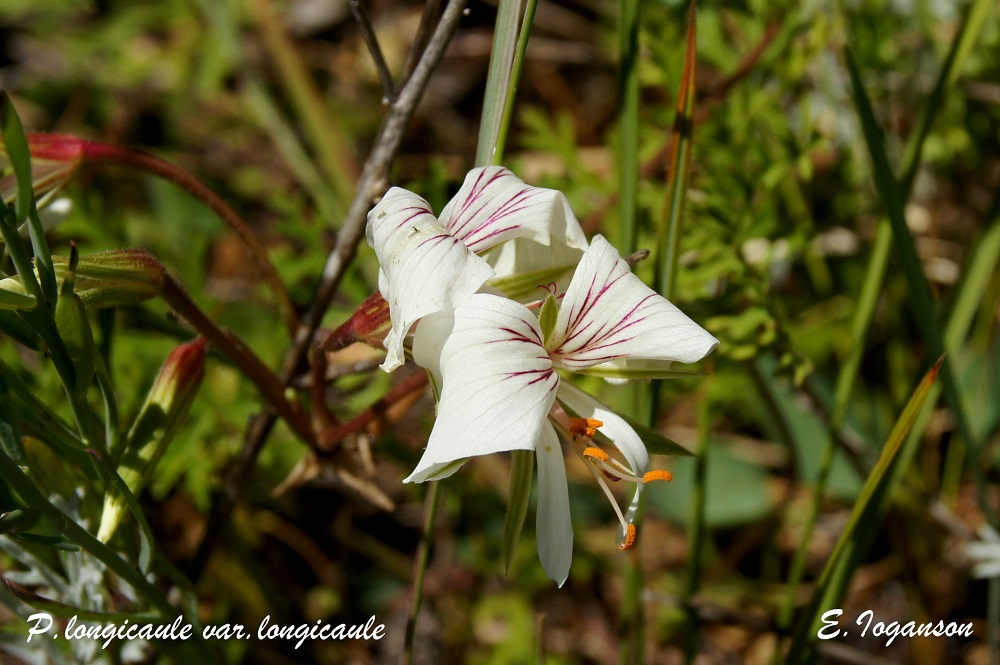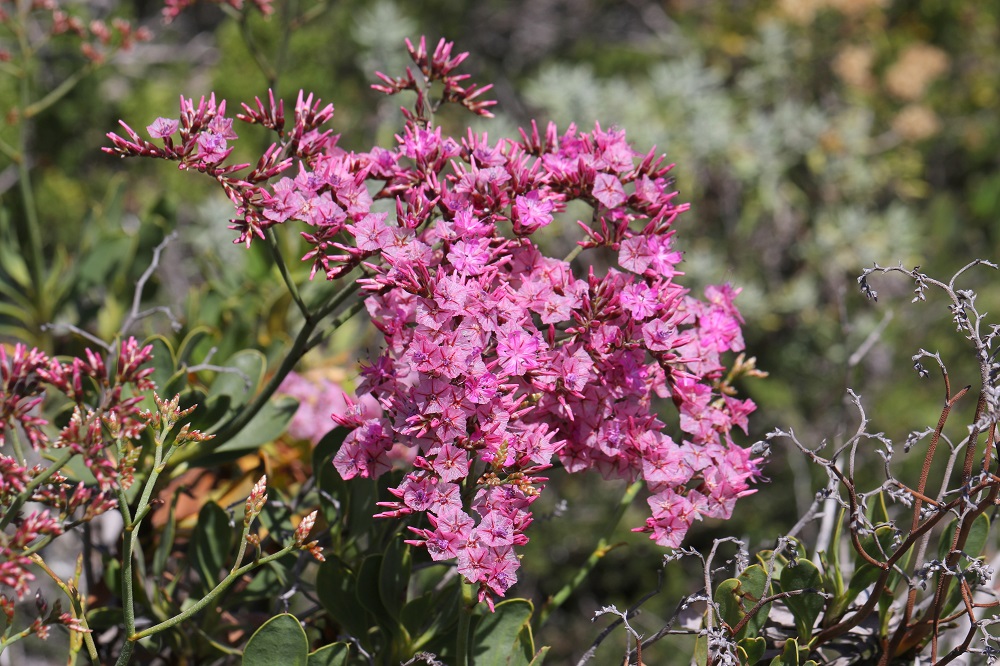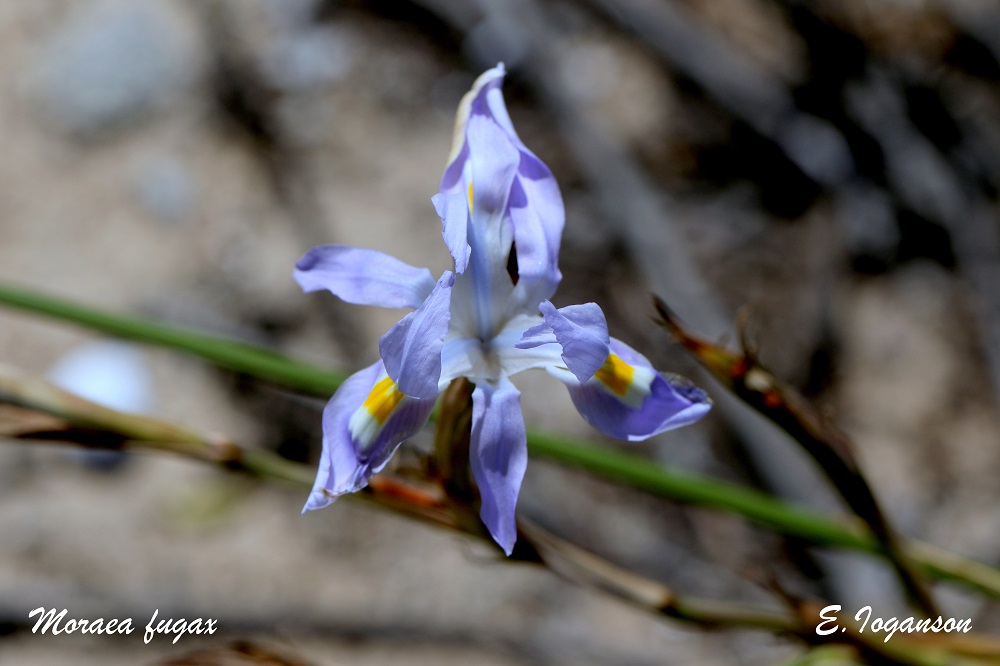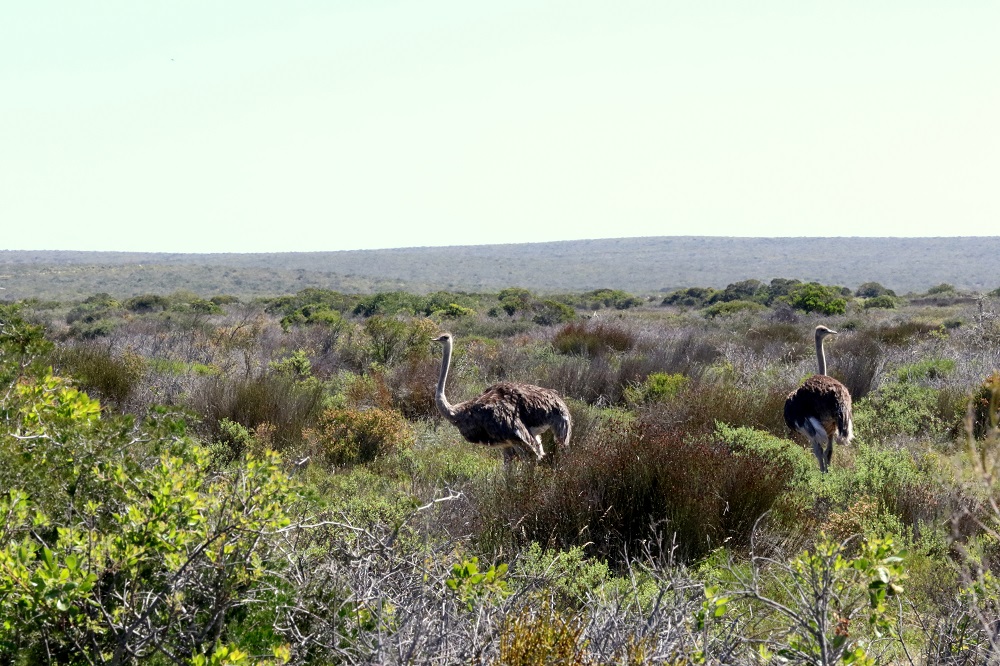P. longicaule
РусскийPelargonium longicaule Jacq., lcones Plantarum Rariorum 3: 10, t. 533 (1795)
genus: Pelargonium L’Heritier in Aiton (1789)
subgenus: Magnipetala Roeschenbl. & F. Albers (2014)
section: Myrrhidium De Candolle (1824)
varieties: P. longicaule Jacq. var. longicaule, P. longicaule var. angustipetalum D.A. Boucher
Decumbent to procumbent, much-branched subshrub, up to 0,5 m high and 1m in diameter. Stems: herbaceous, bases of older stems somewhat woody, glabrescent to pubescent to villous to hirsute and with glandular hairs in between, green and becoming greyish with age. Leaves: lamina indumentums variable as on stems, green but sometimes flushed with red, narrowly cordiform in outline, entire to pinnatilobate to bipinnatisect with narrow segments, base of lamina cordate, apices of segments obtuse to acute and often reddish, margins irregularly incised, (35- )50( -100) x (25- )40(- 60) mm; petiole indumentum as on stems, (15- )50(- 120) mm long; stipules ovate to cordate and sometimes cuspidate, ca. 7 x 6 mm. Inflorescence: peduncles (25- )70( -100) mm long, hirtellous to hirsute and densely interspersed with glandular hairs; involucra! bracts lanceolate, hirtellous, ca. 8 x 2 mm; pseudo-umbels with 2- 6 flowers each. Pedicel: 3 mm long. Hypanthium 8-55 mm long, indumentum as on peduncle. Sepals lanceolate, hirsute and with many glandular hairs; green but prominently raised veins reddish. Petals 4 or 5, white to yellowish to pink to mauve or pinkish-yellow; posterior two obovate or oblanceolate with narrow claws, with red or dark purple streaks, reflexed at less than 90°, 25-40 x 8-12 mm long; anterior two/three spathulate to narrowly lanceolate, slightly reflexed, ca. 20 x 4 mm. Fertile stamens 7 (4 long, 1 medium, 2 short), staminal column ca. 5 mm long, pollen orange. Mericarps: bases ca. 5 mm long; tails ca. 30 mm long.
Chromosome number 2n = 22.
Diagnostic features
Decumbent to procumbent subshrub. Leaves pinnatilobate to bipinnatisect with narrow segments, glabrescent to pubescent to villous to hirsute. Pseudo-umbels with 2- 6 flowers each (usually 3 or 4). Petals 4 or 5, white to yellowish to pink to mauve or pinkish-yellow, posterior two relatively large longer than 25 mm). Fertile stamens 7.
Key to the varieties:
1a Posterior petals obovate, ca. 25 x 12 mm, white to yellowish to pink to mauve................................... var. longicaule
2b Posterior petals oblanceolate, ca. 40 x 8 mm, pinkish-yellow .......................................... .............................................. var. angustipetalum

P. longicaule var. longicaule
Taxon has a wide distribution in the south-western Cape Province. It is known from the Gifberg near Vanrhynsdorp in the north to the district of Bredasdorp in the south. It is mainly confined to mountainous habitats where it grows on sandy soil. The distribution area receives rain predominantly during the winter.
Occasional flowers are found throughout the year, but the peak flowering period stretches from September to November.
The leaves of plants from northern localities such as Gifberg, Graafwater and Hopefield are larger, more hairy and their segments are wider than those of southern localities.
P. longicaule var. angustipetalum D.A. Boucher
Decumbent to procumbent subshrub. Lamina cordiform in outline, pubescent to hirsute, pinnatifid to bipinnatisect. Pseudo-umbels with 2- 6 flowers each. Pedicel 1- 3 mm long; hypanthium 40-55 mm long, hirsute. Petals 4 or 5, pinkish-yellow with red streaks; posterior two oblanceolate, ca. 40 x 8 mm; anterior two/three narrowly lanceolate, ca. 20 x 4 mm. Fertile stamens 7.
So far this variety has only been observed in the vicinity of the type locality on Piketbergat an altitude of ca. 760 m. It is locally very common and apparently a well-established taxon producing many viable seeds. It grows in well-drained soil derived from Table Mountain sandstone. The distribution area receives rain predominantly during the winter months.
This variety flowers from October to December.
The status of variety has been allocated to this taxon because it grows sympatrically with the var. longicaule.


P. longicaule var. longicaule in habitat. West Coast National Park, Western Cape, RSA. Photos by E.Ioganson
It is possible to find the various interesting plants next to P. longicaule on the white sandy of Atlantic shores in the fynbos and see ostriches freely strolling among low shrubs. West Coast National Park, RSA. Photos by E. Ioganson


References:
- Miller, D. 1996. Pelargoniums; a gardener's guide to the species and their hybrids and cultivars 89-90.
- Röschenbleck J, Albers F, Müller KF, Weinl S, Kudla J. 2014. Phylogenetics, character evolution and a subgeneric revision of the genus Pelargonium (Geraniaceae). Phytotaxa 159:31–76.
- Van der Walt, JJA., P.J. Vorster, 1981. Pelargoniums of Southern Africa.
- Van der Walt, J.J.A., Boucher, D.A. 1986. A taxonomic revision of the section Myrrhidium of Pelargonium (Geraniaceae) in Southern Africa. South African Journal of Botany 52: 438–462.



























